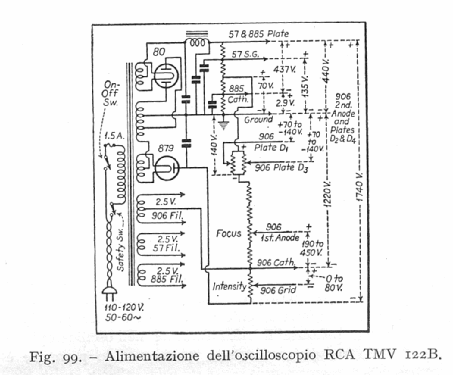
DuMont worked to improve television transmission and reception and implored De Forest for funds to build a long-lasting cathode ray tube for television reception. But DuMont realized that clear images would need the development of scanning in a cathode ray tube. He was involved in the first television transmissions from W2XCD in Passaic. Francis Jenkins, DuMont turned his attention to television. When De Forest took over the mechanical television system of C. He revamped the factory with newly designed machinery: "a high speed sealing machine, automatic grid winding and welding machine, base branding machine, basing and wire cutting machine, high-frequency bombarder and numerous tube-characteristic test sets and life racks." Factory capacity was increased to 30,000 tubes per day. DuMont was hired by the de Forest Radio Telephone & Telegraph Company as vice president and production manager for radio tubes. De Forest had had a checkered career as an inventor and several failed business ventures. Lee de Forest, a radio pioneer who developed the audion tube, the original voice amplifier for radio reception. The Westinghouse Award was later presented as a scholarship award to high school seniors showing promise in a field of science (later the Intel Science Talent Search) and continues to this day as the Regeneron Science Talent Search).īy 1928, DuMont was searching for new opportunities and was wooed by Dr. Management gave him a $500 bonus, a small raise, and devised the "Westinghouse Award" to recognize his accomplishments. There he increased production from 500 tubes per day to an astounding 50,000 tubes per day. As the summers went by, he made his way to the Caribbean, South America and, after World War I, to Europe, where, during the summer of 1922, he was stuck in Copenhagen for months because of a dock workers' strike.Īfter graduating from Rensselaer in 1924, DuMont worked at the Westinghouse Lamp Company in Bloomfield, New Jersey, in charge of radio tube production. The following summer, he worked as a radio operator aboard a coastal steamer making runs from New York to Providence, Rhode Island.
#DUMONT CATHODE RAY OSCILLOGRAPH LICENSE#
In 1915, DuMont became the youngest American to obtain a first class commercial radio operator's license at age 14. He graduated from Montclair High School in 1919, and went to Rensselaer Polytechnic Institute in Troy, New York, where he was part of the Alpha chapter of the Theta Xi fraternity. In 1914, the family moved to Montclair, New Jersey, where there was an indoor year-round pool available at the local YMCA. While recuperating from polio, DuMont was advised to swim to regain the use of his legs. He improved his set each time he rebuilt it and later built a transmitter, while his father obtained the landlord's permission to erect a 30-foot-high (9.1 m) transceiving antenna on the roof. His father bought him a crystal radio receiver which he assembled, took apart, reassembled and rebuilt several times.

DuMont developed an interest in science, wireless radio communication, and taught himself Morse code. During his quarantine, his father brought home books and magazines for the young DuMont to read while bedridden.

At the age of 10, he was stricken with polio and was quarantined at his family's Eastern Parkway apartment for nearly a year.
#DUMONT CATHODE RAY OSCILLOGRAPH TV#
DuMont's successes in television picture tubes, TV sets and components and his involvement in commercial TV broadcasting made him the first millionaire in the business.ĭuMont was born in Brooklyn, New York City, the son of Lillian Felton (Balcom) and William Henry Beaman DuMont. Goldsmith, DuMont's Vice President of Research, and his best friend. In 1946, DuMont founded the first television network to be licensed, the DuMont Television Network, by linking station WABD (named for DuMont, later becoming WNEW and then WNYW) in New York City to station W3XWT, which later became WTTG, in Washington, D.C. In June 1938, his Model 180 television receiver was the first all-electronic television set sold to the public, a few months prior to RCA's first TV set in April 1939. Seven years later he manufactured and sold the first commercially practical television set to the public. First recipient of the Westinghouse Award (later the Intel Science Talent Search, then the Regeneron Science Talent Search)ĭe Forest Radio Telephone & Telegraph CompanyĪllen Balcom DuMont, also spelled Du Mont, (Janu– November 14, 1965) was an American electronics engineer, scientist and inventor who improved the cathode ray tube in 1931 for use in television receivers.


 0 kommentar(er)
0 kommentar(er)
